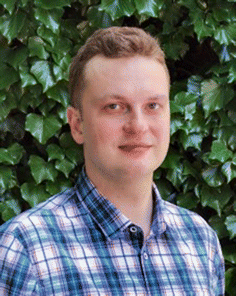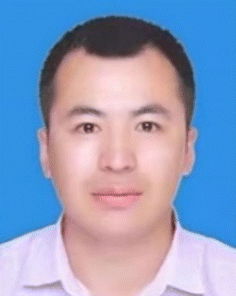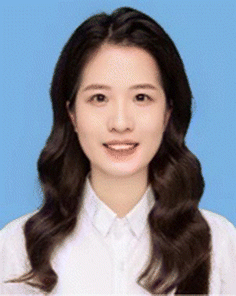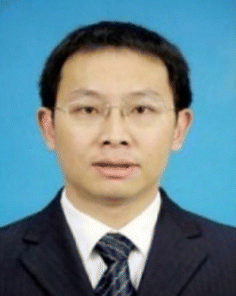DOI:
10.1039/D4NH90038C
(Editorial)
Nanoscale Horiz., 2024,
9, 1062-1069
Nanoscale Horizons 2023 Outstanding Paper Award
Abstract
Recognizing some of the outstanding work published in Nanoscale Horizons in 2023, as well as the authors behind those articles. Discover our winners and their outstanding articles below.
It gives us great pleasure to introduce the winners of our 2023 Outstanding Paper Award in this Editorial.
Our selection process continues to focus on the science presented and the potential future impact of the work. You can find more details of the process in the Editorial from our inaugural awards (https://doi.org/10.1039/C9NH90013F).
With the high calibre of the articles we published throughout 2023, it was a difficult choice for our Editorial and Advisory Board to select winners from the shortlist, with many of our board members commenting during the selection process that it was tough to rank the articles with so many excellent papers in the running! This was reflected in our scoring, with lots of articles in contention for recognition across a range of research themes and a very close final outcome. Nonetheless, we are delighted to introduce our Outstanding Article winner and runner up, as well as our Outstanding Review of 2023.
This year’s Outstanding Review was described by our board as a very timely overview of memristor-based neural networks, with major potential applications and high expected impact in its field. The Outstanding Article winner was celebrated as an excellent addition to the extracellular vesicle (EV) field, a top-quality article with broad novelty and future impact on EV research. Our Outstanding Article runner up showcases quantitative science at the cutting edge of nanoscience and chemistry with a well-designed molecular system, superb fabrication and quality imaging.
Please join us in congratulating our winners; we hope you enjoy reading their outstanding articles as much as we did.
Nanoscale Horizons 2023 Outstanding Article winner
Ultrafast sensitivity-controlled and specific detection of extracellular vesicles using optical force with antibody-modified microparticles in a microflow system
Kana Fujiwara, Yumiko Takagi, Mamoru Tamura, Mika Omura, Kenta Morimoto, Ikuhiko Nakase, Shiho Tokonami and Takuya Iida
This study (
https://doi.org/10.1039/D2NH00576J
) demonstrates a high-throughput method to measure approximately 10
3
–10
4
nanoscale extracellular vesicles (EVs) contained in a 500 nL sample within 5 minutes using a microflow-type light-induced acceleration system (LAC-SYS) by skipping ultracentrifugation.
EVs including exosomes, with diameters of 50–150 nm, play essential roles in intercellular communication and have attracted attention as biomarkers for various diseases and drug delivery capsules. The rapid and sensitive detection of nanoscale EVs from trace samples is crucial for early diagnosis of intractable diseases such as cancer and dementia. However, the extraction of nanoscale EVs from cell-culture media previously required a complex and time-consuming process involving ultracentrifugation.
A research team from the Research Institute for LAC-SYS (RILACS) at Osaka Metropolitan University delivered this success based on the optical force to accelerate the reaction between nanoscale EVs derived from cancer cells and antibody-modified microparticles, and three-dimensional analysis of their aggregates with confocal microscopy.
Nanoscale Horizons 2023 Outstanding Article runner-up
Template-directed 2D nanopatterning of S = 1/2 molecular spins
Kyungju Noh, Luciano Colazzo, Corina Urdaniz, Jaehyun Lee, Denis Krylov, Parul Devi, Andrin Doll, Andreas J. Heinrich, Christoph Wolf, Fabio Donati and Yujeong Bae
In this article (
https://doi.org/10.1039/D2NH00375A
) we developed a surface reaction pathway enabling the simultaneous realization of an individually addressable VOPc 2D spin array with controlled spin–spin distance and substrate decoupling. The molecular template is formed by growing the spins on a diamagnetic TiOPc monolayer via a thermally induced surface modification. Substrate charge transfer and molecular film strain enforce the desired spacing of a few nanometers between VOPc molecules. This spacing allows for weak interactions between spins while minimizing decoherence effects, which is a crucial trade-off in molecular spin qubit architecture design.
This work was realized as a collaboration between the IBS Center for Quantum Nanoscience (QNS) in South Korea and the Swiss Light Source at the Paul Scherrer Institute (PSI) in Switzerland. The work was initiated by combining low-temperature scanning tunneling microscopy and density functional theory carried out in the QNS, in which the authors investigated the growth and the electronic properties of the molecular film. Through the synchrotron X-ray absorption spectroscopy performed at the PSI, the team unraveled the magnetic properties of the system.
Nanoscale Horizons 2023 Outstanding Review winner
Memristor-based neural networks: a bridge from device to artificial intelligence
Zelin Cao, Bai Sun, Guangdong Zhou, Shuangsuo Mao, Shouhui Zhu, Jie Zhang, Chuan Ke, Yong Zhao and Jinyou Shao
This review (
https://doi.org/10.1039/D2NH00536K
) discusses the technologies relevant to the integration of neural networks based on memristors from materials to applications. At the same time, the types of functional materials commonly used in memristors and their working mechanisms are analyzed comprehensively. In particular, the important characteristics of two-dimensional materials and ferroelectric materials used to fabricate memristive devices and the mechanisms of the polymorphic memory phenomena are summarized. Finally, this review also demonstrates the development status, basic operating principle, and key challenges of memristor-based neural networks, and some scalable applications of memristor-based neural networks are also prospected.
Dr Heather Montgomery, Managing Editor
Professor Dr Katharina Landfester, Editorial Board Chair
Author biographies
Nanoscale Horizons 2023 Outstanding Article winner
Ultrafast sensitivity-controlled and specific detection of extracellular vesicles using optical force with antibody-modified microparticles in a microflow system
Kana Fujiwara received a Master’s degree from the Department of Physical Science, Graduate School of Science, Osaka Prefecture University (presently, Osaka Metropolitan University (OMU)). She engaged in research activity at the Bio-photophysics Group (Iida Laboratory) in OMU and at the Research Institute for Light-induced Acceleration System (RILACS) in OMU. Her research interest is the detection of nanoscale extracellular vesicles from biological cells.
Yumiko Takagi is a Specially Appointed Researcher at the Research Institute for Light-induced Acceleration System (RILACS) in Osaka Metropolitan University and is engaging in the JST-MIRAI Program. Her present research interest is the detection of various proteins from clinical samples.
Mamoru Tamura received his PhD in Engineering in 2016 from Osaka Prefecture University. His career started as a Specially Appointed Assistant Professor in Osaka Prefecture University in 2016. In 2021, he was appointed as an Assistant Professor in Osaka University, and was also promoted as a Specially Appointed Lecturer in Osaka Prefecture University (currently Osaka Metropolitan University). His present research interests are nanophotonics, optical manipulation, photothermal science, computational fluid dynamics, computational physics, and so forth.
Mika Omura recently received a Master of Science degree from the Department of Biological Science, Graduate School of Science, Osaka Metropolitan University (Chemical Biology Laboratory: Professor Dr Ikuhiko Nakase). Omura is working on the development of cell targeting systems using functional peptides and extracellular vesicles (especially a system that incorporates an inkjet system (Inkjet-CPP system)).
Kenta Morimoto received a Master of Science degree from the Department of Biological Science, Graduate School of Science, Osaka Metropolitan University (Chemical Biology Laboratory: Professor Dr Ikuhiko Nakase). Morimoto recently developed a functional peptide-modification system for isolated microvesicles (PepEV system).
Ikuhiko Nakase obtained his PhD in 2005 from Kyoto University. He completed his postdoctoral training at the Department of Chemistry, University of Washington (Seattle, WA, USA). After appointment as an Assistant Professor of Biochemistry at the Institute for Chemical Research, Kyoto University (2006–2013), he worked as a Special Lecturer at the Nanoscience and Nanotechnology Research Center, Osaka Prefecture University (OPU) (2013–2018), and an Associate Professor (2018–2020) and Professor (2020–2022) at the Department of Biological Science, Graduate School of Science, OPU. Nakase is currently a Professor (2022–) at the Department of Biological Chemistry, Graduate School of Science, Osaka Metropolitan University. Nakase focuses on the development of targeted intracellular delivery systems that effectively utilize cell-penetrating peptides and extracellular vesicles.
Shiho Tokonami received her PhD degree at Osaka Prefecture University (OPU) in 2007. She was a postdoctoral fellow at Hiroshima University, Tokyo University of Science Yamaguchi, and OPU from 2007 to 2009. After that, she was a special lecturer at the Nanoscience and Nanotechnology Research Center (N2RC), Research Organization for the 21st Century, OPU, from 2009 to 2015. She is currently an Associate Professor at the Graduate School of Engineering, Osaka Metropolitan University (OMU) (from 2022 to the present) and the Deputy Director of the Research Institute for Light-induced Acceleration System (RILACS) at OMU. Her research area is nanotechnology and analytical chemistry, including a development of biosensors and microbial fuel cells, under the support of NEDO.
Takuya Iida received his PhD degree at Osaka University in 2004 and served as a JSPS Research Fellow from 2003 to 2005. He was a postdoctoral fellow at JST from 2005 to 2007. After that, he served as an Assistant Professor at the Graduate School of Engineering, Osaka Prefecture University (OPU) from 2007 to 2009, a special lecturer at N2RC, Research Organization for the 21st Century, OPU from 2009 to 2014, an Associate Professor at Graduate School of Science, OPU from 2014–2020 (concurrently, a delegate of the Key Project Grant Program of OPU), and a Full-Professor from 2020 to the present. Osaka Prefecture University and Osaka City University merged to form Osaka Metropolitan University (OMU) in April 2022. Therefore, he is currently a Full Professor in the Graduate School of Science, OMU (2022 to the present), and the Director of the Research Institute for Light-induced Acceleration System (RILACS), OMU. His present research interest is focused on Biophotophysics, and the development of the “Light-induced acceleration system” (LAC-SYS) for various biochemical reactions under the support of the JST-Mirai Program.
Nanoscale Horizons 2023 Outstanding Article runner-up
Template-directed 2D nanopatterning of S = 1/2 molecular spins
Kyungju Noh is a PhD student at the Center for Quantum Nanoscience in South Korea. She obtained her Bachelor’s degree in Physics at Ewha Womans University, and she is currently in the combined MS-PhD program in the same department. During her PhD, she investigated the spin properties of single organic molecules on insulating surfaces using low-temperature STM with ESR capability. Her primary interest lies in the search for single molecules with exceptionally long quantum coherence times while they are on a surface.
Luciano Colazzo is a researcher at the IBS Center for Quantum Nanoscience, engaged in the field of nanotechnology chemistry and quantum technologies. He was awarded an independent research grant, the IBS Young Scientist Fellowship and, as of late 2021, he is the lead researcher for the “On-Surface Quantum Chemistry” project. His research focuses on the on-surface synthesis of molecular qubit arrays, by enforcing a multidisciplinary approach that encompasses quantum mechanics, molecular chemistry, and surface sciences.
Corina Urdaniz is currently a Postdoctoral Researcher at the IBS Center for Quantum Nanoscience (QNS) situated at Ewha Womans University in Seoul, South Korea. She earned her PhD in Physics from the University of Buenos Aires (UBA), Argentina, in 2014. From 2014 to 2020, she was an assistant professor at the University of Engineering of the UBA. In 2020, the National Scientific and Technical Research Council (CONICET) granted her an assistant researcher position. Her research mainly focuses on computational physics to study the structural, electrical, and magnetic properties of quantum systems on surfaces.
Jaehyun Lee is a post-master’s researcher at the Institute of Quantum Nanoscience (IBS), Ewha Womans University, boasting over three years of experience in X-ray experiments (XAS, XMCD) and multiplet calculations. She holds both master’s and bachelor’s degrees in Physics from Ewha Womans University, under the supervision of Prof. Fabio Donati. Her career has been dedicated to exploring suitable spin qubits for quantum computing, with a particular focus on the magnetic spin properties of molecules and their analysis.
Denis Krylov is a research engineer at Forschungszentrum Jülich. His expertise lies in such fields as cryogenics, ultra-high vacuums, and quantum nanoscience. He earned his Master’s degree in engineering physics from Peter the Great St. Petersburg Polytechnic University in 2014 and his doctoral degree in physics from TU Dresden in 2018. While working at the Center for Quantum Nanoscience, he participated in the work highlighted in
Nanoscale Horizons. Dr Krylov has extensive hands-on experience with scanning probe, ESR, and XMCD experiments and specializes in designing and constructing cryogenic temperature scanning tunneling microscopes.
Parul Devi is a Postdoctoral Researcher at Johannes Gutenberg University Mainz in Germany, and is also affiliated with the Max Planck Institute for Polymer Research in Mainz, Germany as a guest scientist. She received a PhD (Physics) from the Max Planck Institute for Chemical Physics of Solids in Dresden, Germany in 2019 and a Master of Technology from the Indian Institute of Technology Delhi. After her PhD, she worked in the Ames Laboratory, Iowa, USA as a Postdoctoral researcher. Subsequently, she worked as a Postdoctoral researcher at the IBS Center for Quantum NanoScience, Seoul, South Korea. Afterward, she returned to Germany again and worked at Helmholtz-Zentrum Dresden Rossendorf, Germany. During her research, she also visited several other international laboratories to carry out experiments.
Andrin Doll is a tenure track scientist at the Laboratory for Muon Spin Spectroscopy at the Paul Scherrer Institute (PSI) in Villigen, Switzerland. He is co-responsible for the high-field and low-temperature instrument HAL-9500, which combines millikelvin temperatures with magnetic fields up to 9.5 T. His research interests revolve around the combination of magnetic resonance spectroscopy and large-scale facility research, aiming for synergies by combination of different techniques. He acquired expertise in radio-frequency engineering and magnetic resonance techniques during his studies in electrical engineering and his subsequent dissertation on electron paramagnetic resonance spectroscopy in the Jeschke group at ETH Zurich, Switzerland, and was awarded the Raymond Andrew Prize and the Bruker Thesis Prize. After his PhD, he focused on the detection of nuclear magnetic resonance with magneto-resistive sensors during his first PostDoc at CEA Saclay, France, with a mobility fellowship awarded by the Swiss National Science Foundation. He joined the PSI at the end of 2019 and worked on microwave-driven experiments at the PSI’s large-facility infrastructure. Initially as a PostDoc with J. Dreiser and Z. Salman, he developed electron spin resonance techniques at the Swiss Light Source and at the Swiss Muon Source, which included the support of user experiments at the EPFL/PSI X-Treme beamline. Subsequently, at the end of 2022, before his tenure track position, he spent one year in the Quantum Photon Science Group of S. Gerber as a project scientist, where he implemented microwave-driven experiments at the X-ray free-electron laser SwissFEL.
Andreas J. Heinrich is a world-leading researcher in the field of quantum-coherent nanoscience with a focus on quantum spins on surfaces. He pioneered spin excitation and single-atom spin resonance spectroscopy with scanning tunneling microscopes – methods that have provided high-resolution access to the quantum states of atoms and nanostructures on surfaces. Heinrich is fascinated by the world of atoms and nanostructures, built with atomic-scale precision, and educates the public on nanoscience, as demonstrated by the 2013 release of the movie “A Boy and his Atom”. A native of Germany, Heinrich received his PhD in 1998 from the University of Goettingen and then joined the research group of Dr Donald Eigler as a postdoc. Heinrich spent 18 years in IBM Research, which uniquely positioned him to bridge the needs of industrial research and the academic world. Heinrich became a distinguished professor of Ewha Womans University in Seoul, South Korea in August 2016 and started the Center for Quantum Nanoscience (QNS) of the Institute for Basic Science (IBS) in January 2017. The QNS is operating several state-of-the-art STM and AFM systems and combines this atomic-scale approach with ensemble-averaging techniques such as x-ray spectroscopy and ensemble ESR with a surface-science focus. These experimental techniques are rounded off with synthetic chemistry and a well-rounded theory team. The QNS’s motto is “engineering the quantum future”. On the goal-oriented side, this implies a focus on developing new qubit platforms for quantum computation with spins on surfaces. On the exploratory side of our research agenda, we continue the decades’ long quest of exploring how the world works on the atomic length scale.
Christoph Wolf is a group leader in the IBS Center for Quantum Nanoscience, located in Seoul, South Korea. His team focuses on the theory of quantum-coherent nanoscience, a relatively new research field that aims to exploit quantum phenomena at the fundamental limit of matter. He is fascinated by the idea of building quantum machines atom by atom, which might enable us in the future to build quantum computers, and by all the challenges we meet along the way. Before joining the QNS, he obtained a PhD from POSTECH, South Korea in 2017 and a master’s degree from the University of Technology Graz, Austria, which is also his home town. When he is not in the office or travelling for work, he enjoys outdoor activities and indoor sports.
Fabio Donati is an Associate Professor of Physics at Ewha Womans University and a Research Fellow at the Center for Quantum Nano Science in Seoul. He holds a PhD in Radiation Science and Technology from Politecnico di Milano, Italy, with part of his research conducted at the Max Planck Institute in Halle, Germany. Previously, he worked as a post-doctoral researcher at EPFL in Switzerland. In 2018, he received the Max Auwärter award for his achievements in the physics of surfaces and interfaces. His research focuses on the magnetism and quantum coherence properties of atomic-scale structures at surfaces.
Yujeong Bae is the group leader of the Quantum Magnetism group at the nanotech@surfaces Laboratory at Empa in Switzerland. The work highlighted in
Nanoscale Horizons was conducted while she was a group leader at the Center for Quantum Nanoscience (QNS), Institute for Basic Science and a research professor at the Department of Physics, Ewha Womans University in South Korea. She received her Bachelor’s and PhD degrees in Physics from Ewha Womans University and conducted her postdoctoral research at the QNS and IBM Almaden Research Center. Dr Bae established her own research group at the QNS, focusing on functionalizing atomic/molecular spins on surfaces for demonstrations of quantum information science, quantum sensing, and quantum simulation using electron spin resonance techniques integrated with scanning tunneling microscopy. She has recently started establishing a new group at Empa to expand her studies into strongly correlated electron systems within the realm of quantum materials.
Nanoscale Horizons 2023 Outstanding Review winner
Memristor-based neural networks: a bridge from device to artificial intelligence
Zelin Cao is currently pursuing a PhD degree at Xi’an Jiaotong University under the supervision of Professor Bai Sun. He received his MS degree in Condensed Matter Physics from Southwest Jiaotong University in 2020. Currently, his main research interests are the design and manufacture of nanomaterials for memristive memory applications and understanding the microscopic mechanisms of resistance-switching using density functional theory (DFT) calculations.
Bai Sun received his PhD degree in the Faculty of Materials and Energy at Southwest University, and worked in Southwest Jiaotong University from 2016. Subsequently, he conducted postdoctoral research in the University of Waterloo from 2018 to 2021. Currently, Bai Sun is a professor at Xi’an Jiaotong University. His research interests mainly focus on the preparation of memristive devices and their applications in brain-like chips, neural networks, neuromorphic computing, quantum computing, information sensing, electronic skin, and artificial intelligence.
Guangdong Zhou received his PhD degree from the Faculty of Materials and Energy, Southwest University in 2018. He is currently a professor at Southwest University, and his research focus is on the physical mechanism of memristors, and memristor-based functions including memory logics, displays and synapses.
Shuangsuo Mao is pursuing a PhD degree under the supervision of Professor Yong Zhao and Professor Bai Sun. He received an MS degree in Condensed Matter Physics from Southwest Jiaotong University in 2020. His research focus is on the design of memristive devices and the fabrication of nanomaterials for memory applications.
Shouhui Zhu is currently pursuing a PhD degree under the supervision of Professor Yong Zhao and Professor Bai Sun. He received his MS degree from Southwest Jiaotong University in 2020.
Jie Zhang received her PhD degree in condensed matter physics from Southwest Jiaotong University in 2023 and is currently working at Chengdu University of Technology. Her research interests mainly focus on the development of new energy materials, preparation of superconducting materials and memristive devices.
Chuan Ke is an associate professor at Southwest Jiaotong University. His research interests are optical devices and laser spectroscopy methods for electrical engineering.
Yong Zhao is currently a professor of physics at Fujian Normal University, and a Chair Professor at Southwest Jiaotong University (SWJTU). He received his PhD degree from the University of Science and Technology of China in 1988. During 1988–1990, he was a lecturer and an associate professor at the School of Physics at Zhejiang University. During 1992–2003, he was a senior researcher fellow, and a research professor at the University of New South Wales. Since 2003, he has been a Chair Professor and Director of the Superconductivity R&D Center at SWJTU. Currently, his research focuses on the preparation of superconducting materials and memristive devices.
Jinyou Shao received his PhD degree from Xi’an Jiaotong University, Xi’an, China, in 2009. He is currently a professor at the State Key Laboratory for Manufacturing Systems Engineering, Xi’an Jiaotong University. His research interests include micro/nanomanufacturing techniques, flexible electronics and systems, nanosensors and devices. Prof. Shao received the First Prize Technology Invention Award from the Ministry of Education of China in 2015. His awards include Changjiang Scholars – Young Category, NSFC Fund for Excellent Young Scholars, New Century Excellent Talents of the MoE of China, and Shaanxi Young Talents in Science and Technology, among others.
|
| This journal is © The Royal Society of Chemistry 2024 |
Click here to see how this site uses Cookies. View our privacy policy here. 





























